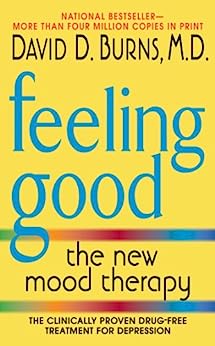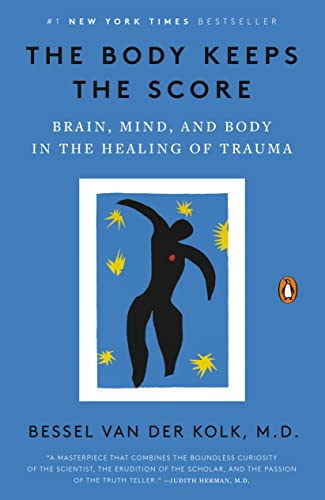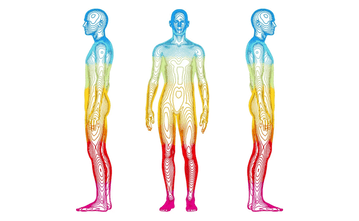I grew up with a lot (!!!) of anxiety. Little bursts of anxiety on the bus on the way to school. Shut down reactions in seemingly mundane social interactions. I am aware of some of the reasons — my very conservative, very evangelical upbringing served to reinforce the narrative that I was never doing (saying, thinking, being) the “right” thing, “never good enough,” etc. The guilt and shame baked into that particular ideological constellation created a baseline of uncertainty at best. I never really knew quite where I stood with my primary attachment figures, such as God, the social formation in which I so desperately wanted to belong, my leaders.
The local example I experienced of a very conservative framework, all by itself, wasn’t enough to tip me over into a generalized anxiety disorder; there were other factors. As near as I can tell, looking back, I was prone to some anxiety at the neurobiological level, it was modeled in my home as the norm, my parents didn’t have the language or technology to diagnose and address it early on, and so on. Finally, I was somewhat neurodivergent, redhaired, freckled, and a late bloomer. So what was imprinted on my cognitive (and every other part of me) experience was “anxiety.” I highlight the cognitive here because my initial foray into counseling was profoundly helpful for me to start to undo some of the “cognitive distortions” that were running through my mind constantly.

The book “Feeling Good” (David D. Burns, M.D.) was the first book I read for the purpose of psychological self-improvement. It was a revelation. The author presents a step-by-step approach to challenging negative thoughts and beliefs that lead to feelings of depression and anxiety, and replacing them with positive, realistic thoughts that can improve one’s mood and overall wellbeing.
Challenging negative thoughts is a wonderful step for many. For me, it was enough to move me out of my current job, among other significant life changes. I was more able to sleep at night, enjoy activities that had lost their enjoyment because I was so “in my head.” The mantra, something to the effect of, “get out of my head” (in a healthy way) was a turning point.
However, the anxiety was still alive and well in my body. Caught, attached, running wild at times, at the level of “my whole nervous system” was anxiety — so far as I could think differently, I was doing and being much better. The nerves flowing in and around the rest of my self were still holding, acting on anxiety, or the seen and unseen threats to my social, emotional, material safety. My jaw would still clench, sometimes it was my jaw and all the muscles in my torso, in my lumbar area, and my digestive system would tell me I’m anxious by the waves of “I’m not hungry (when I should be),” and my voice would fade out to a level others would notice, and my joints would sometimes buzz in the background with pain, and… and… and…
Another text worth mentioning, “The Body Keeps the Score” (Bessel van der Kolk), takes a more comprehensive, holistic approach to trauma. (I acknowledge here the overlap and important distinction between trauma and anxiety. They are different, and they often hang out together). “Feeling Good” gave the executive functioning part of my brain the ability to think “I can give up some control and be OK,” and that was the limit of its effect for some time — my guts, my muscles, my bones were telling me “there’s no #%&@ing way I can give up control and be OK.” Bessel van der Kolk discusses the neurological and physiological effects of trauma on the body, including changes in brain function, the stress response system, and other physical symptoms associated with trauma.
When I was able to put the pieces together, my therapist and wider support system enabled me to put words to the sometimes disconnected experience of “my brain” and “my body.” I developed words for the gaps in my experience. This looked like, for example, I would do some budgeting, the simple math at the end of the month: my bills are paid, I have money saved, we’re going to be OK this month and for the foreseeable future. These thoughts were there. Strictly math. The emotional level, that which touches on all the rest of my self, was telling me something else. This was the gap. My body, the gut-brain / nerves in my stomach, the muscles in my back, etc, they looked at the math and transformed it into something I could not put into words — I felt it, though. The process, with myself at least, was that I’d functionally (sometimes over-function) in order to manage the anxiety (which at the cognitive level didn’t exist) while my body felt profoundly un-safe. There was a continued nervous system level of experience, “I’m not safe,” “there’s a huge wave of disaster that’s about to crash on my head,” “don’t you dare let your guard down.” Though this contradicts in some way my carefully selected quotes here, this experience was pre-verbal, pre-liminal, just caught, experienced and sensed without words. What does “there’s a wave of disaster coming” feel like? The vocal chord sensations, the painfully tight lower back, the buzzing in my guts. Anxiety.
Therapy came into the picture for me here. My own therapeutic journey helped me put into words what was caught, bouncing around in my nervous system for most of my life. What language could help bridge the gap between my somatic, bodily experience of “what if …” and my cognitive experience of it? There are lots of languages, theories, modalities — as an aside, counseling is so much about “fit,” primarily with the person of the counselor, and secondarily with the language. For me, “parts” language has been like hand-in-glove for me both as a client and a therapist.
To think of anxiety as a “part” of me is just the start of the process. In the therapeutic space, it has been wonderful to imagine that part of me as the deeply held, known, felt experience of Me in the form that shows up in those moments of “I’m doing the math about my current financial situation and my nervous system is telling me the house is on fire while my rational, executive part is telling me that we’re OK.” In those moments, and in many others, it goes back to those ‘anxiety attacks on the bus’ when I was a 6th grader, or those “George Costanza from Seinfeld” type of moments, where I’m worried I’m going to say the wrong thing and be punished (socially, professionally or otherwise) and then I do say the wrong thing and then I am punished. Therapy, for me as a client, was where my therapist gave me space to describe where (in my own words) the “anxious, weird kid part” shows up as a feeling, in my body, here and now, what that’s like, how I feel towards that part, and so on.

A couple of general examples.
Imagine your anxiety like a two year old. That two year old may show up and inspire contempt, frustration, rolls of the eyes — “what are you doing here?” type of reactions, especially when anxiety (the two year old) shows up in a board room, in a fight with your partner, after making a spectacular mistake, and so on. If you’ve had the experience of being around a small child, transpose the image of “the anxious part” with “the small child” and browse through some typical management options: tell the anxious part / the child to choose another feeling (“don’t worry about it”), to feel that way but manage it better (“calm down”), or to function in a way that conflicts with the anxiety itself but is more socially functional (“just do your job”). Like an actual two year old, that anxious part (imagined here as the full, embodied experience of a two year old) needs validation, protection, support, space to exist. Small children can calm down, re-engage and integrate into the larger social structure, when they are given the time, support, skills and tools to do so. And there are limits! If one has an anxious part who shows up like a two year old, there are probably a whole pantheon of other parts who are sick of that part, who protect that part, who manage that part, and so on. All of these parts are worthy of that same curiosity, kindness, compassion.
Another example is, imagine your anxious part is a hypothetical you at 12 years old. This is not a universal image, and that is on purpose. In the counseling room, in that therapeutic container, “the anxious part” may have an individual particular historical person as its experienced image. I’ve heard many versions of “the me from back when,” or identification with fictional characters, objects or places of interest. King Kong. Ghost me. Boomer dad. My inner hippy. My inner drill instructor.
In keeping with the idea of “12 year old” you, back then, however you were in that time and space: What did “little you” need to do to get their needs met at home? At school? Did you need to be quiet and good? I’ve heard some version of “I wasn’t allowed to be X so I had to be really Y so that I could get connection, attention, etc.” “I had to be funny or smart to be considered good enough.” “I stayed safe by being perfect.” Did your formative years include a lot of emotional predictability and consistency? Or were those years more chaotic? I’ve heard “only dad / mom was allowed to feel angry,” or “I was safe in my room and that’s about it.” Then, we form over the course of decades, these “parts” of our nervous system end up catching these rules, routines, “ways of being,” what gives us a sensation of “safety” — and eventually we run into situations where this is ineffective. The nerves firing, over and over, millions of times, catch these experiences (safe or not, connected and worthy or not, needs met or not), and these nerve-level, bodily level experiences don’t just disappear when we leave the room, go off to college, have our first child, quit that toxic manager, and so on.
What kept “you at 12 years old” safe may be an ongoing behavior that’s putting “you at 42 years old” at risk of losing your job, relationship. This is a taste of what parts work can be. Explore this as a general concept as you’re sitting with yourself: Can the part of you that feels like “you at 12” be flexible, and if applicable, do they have the space and safety here to let their guard down a bit right now? Most 12-year-olds can’t do that well (dial up a sensation of safety and act accordingly, especially when their nerves are fighting it). If your “inner child part” is freaking out, it’s going to be hard to calm down, and therein lies the work. Can we give some curiosity and respect and kindness to that one part? This takes time, curiosity, kindness, compassion, to get those parts to calm down, to let the external reality of safety flow into the internal system, to get the internal parts system to start connecting and relating in a new way.
The parts work development can take on creative form, beyond the typical “firefighter, protector, Self, exile, etc,” to fit the experience of any client, and in an archetypal sense, they tend to correspond to our universal needs: safety, connection, basic material needs, social needs, etc. Think, “My Great Wall of China” part, “Bowser,” “my Karen part,” “my mom,” and so on.
For me, as for any prospective client, ultimately the internal and external health is the goal (e.g. a steady stream, a flow within the internal system, of all that’s needed for health: peace, love, kindness, joy / enjoyment, goodness). In some cases, this means reconciling with those exiled parts of our selves that show up as “me as a sad teenager,” a “Karen” energy, and so on. Imagine reconciling your “Karen part” with your “sad teenager part” with your “manager / get s*** done part” with your “inner hippy” with your… and so on.
Connecting to the initial image, and the split between the cognitive and the somatic, for many clients there is a very strong ability to out-think or think-around the bodily experience. This bypass of emotions is usually, among many other things, a way to safety. This can become problematic when the temporary safety ruptures us from the ultimate, essential experience of safety — the security, connectedness that can be earned through consistency, secure attachment.
Another particular example, which may apply to some social locations: Picture this. An anxious young person who is forced, for example, to let sadness come in and grab hold of one’s body. For some, this is to describe a nightmare scenario. The association is bad breakups, social rejection, funerals, a parent leaving, a betrayal. It’s very hard for an “anxious part” to imagine some positive, hopeful scenarios coming from sadness, weakness, vulnerability, or other socially questionable emotions. So the body gets to disconnect from the mind in order to keep the whole system safe. The mind gets to be the seat of experience for the anxious person suppressing sadness, as an example, and the tears get to stay inside. Later, when sadness needs to present, those pathways and internal relations have been suppressed for so long that nothing shows up. Numbness. A cognition of sadness, but the body is “over there,” in some depersonalized or disassociated sense. The picture of healing here is giving “the anxious part” the space to exist, to be, and to let those other uncomfortable parts share some space — safely. The body gets to feel sad, for example, and that “anxious part” gets to back off a little bit, let it happen, notice that the whole bodily system can be OK while experiencing this emotion in the body.
Finally, the somatic part — “the anxious part” has a bunch of thoughts (“what if I say the wrong thing”) attached to some body sensations. A body scan, slowly noticing and focusing on different parts of the body, can help one increase awareness of our emotions in their embodied form. Scan for the most energetic, needy, emotionally charged body part (head, chest, lungs, lower back, throat, chest, shoulders, joints, eyes), and then notice whatever is there — a flavor, smell, lightness, location, movement (floating, buzzing, tightening, looseness, heat, heavy, and so on). What’s that feel like in your body? When safe, it is wonderful to look inward, to give space to that part’s experience, because in giving that experience some safety, healing can come into the picture. It can sound like, “I was constantly worried about saying the wrong thing, it feels like tightness in my neck, where my voice comes out, and a weight on my brain…” And then, after some curiosity, some work, “… I can feel that part of me relax. That part of me feels the safety I’m in. I can do the wrong thing sometimes, and that’s OK. I feel that OK-ness as my neck, my voice relaxes.”
Notice here, I jump in and out of universal and particular examples. Some people are very comfortable with grief, sadness, and the flavor of their internal polarizations and somatic experiencing is very different. Two examples to make the point: some people’s anxiety causes them to procrastinate until the last minute, some people will have the same emotional experience and the complete opposite behavior, doing all of their productive work as soon as possible. What is your experience with your parts? There’s no set patterns, no set formulas, except at the deepest, most human level (i.e. need for safety, the healing process). Here, I invite you to consider what words you’d use to describe your different “parts.” What are they like with each other? Are there some parts with whom you are more curious, or maybe parts who are difficult to name? What’s happening when you start paying attention to them?
I have a team of clinicians who want to sit with you, be curious with you, hold space for some compassion and kindness with your internal system. Can we bring some kind, light awareness to your parts?

